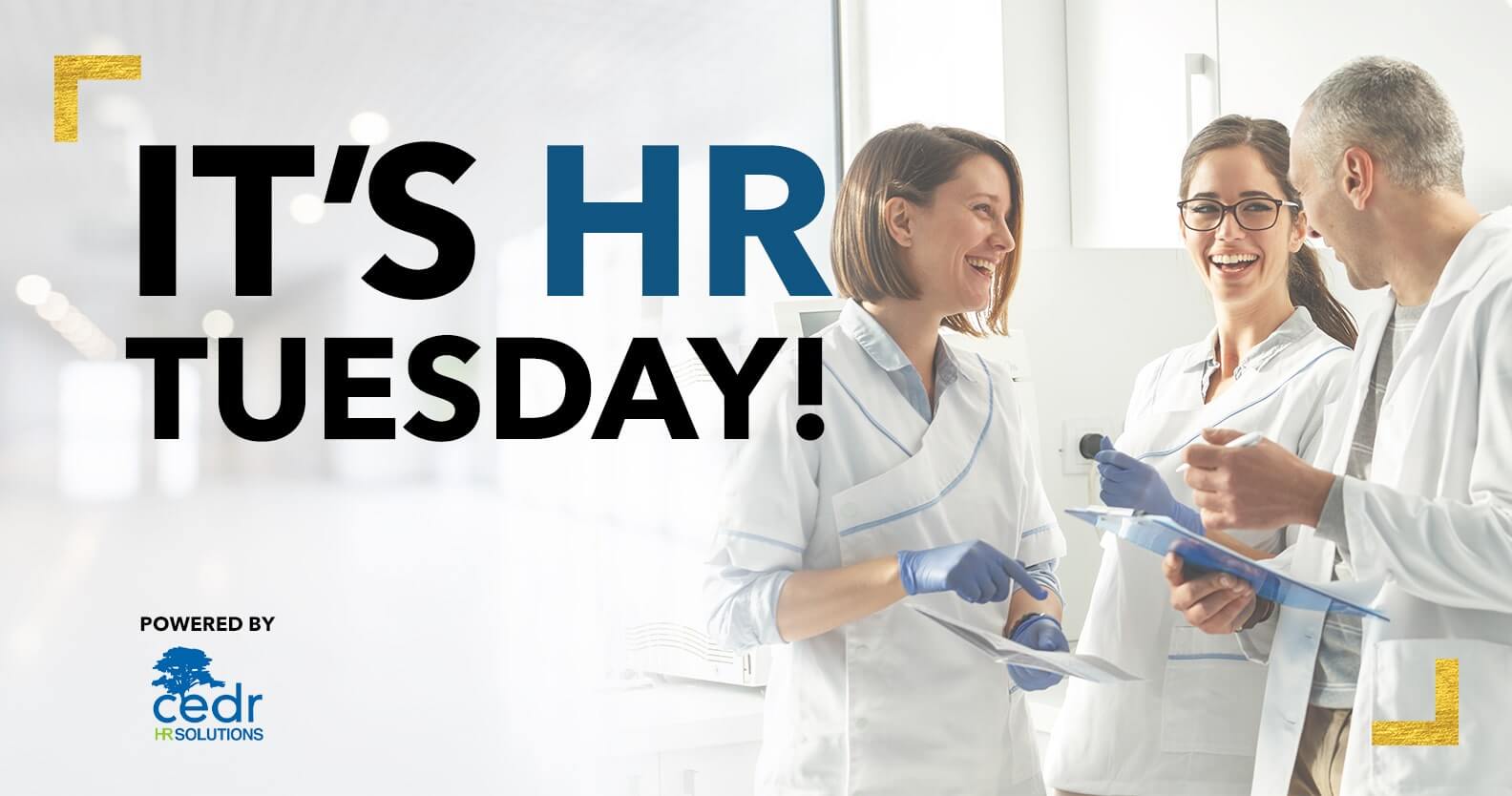After COVID-19 Employee and Patient Safety Will Be One and the Same

Now that the COVID-19 lockdown has been going strong for about a month, the American workforce is starting to look at how and when they’ll be able to get back into production mode.
But, as you’re thinking about what it’s going to take to bring your employees back from a furlough and start seeing patients again, it’s important that you are ready and able to adjust to the “new normal” that will be an inevitable product of this crisis.
Even when the economy is open again, the coronavirus will still be around. At least, that is, for a while. And your practice will need to be prepared to deal with that reality in a way that makes everyone who comes through its doors comfortable.
It’s for this reason that we wanted to take this opportunity to give you a few ideas about how to address the need for stricter health and safety protocols at your practice.
Everyone will need to feel confident that returning is safe
In order to successfully bring anyone back to your practice, your employees and your patients are going to need to know that it is safe for them to be there. The first component of that process involves developing a protocol for transparent communication.
The safety of both patients and employees is intersecting in a way that nobody could have imagined as a result of this crisis. That said, in the days after the curve is flattened, the safety of your patients and the safety of your employees will be one and the same.
Social distancing works by limiting the number of contacts people have with one another. As we have all seen, even grocery stores and gas stations are taking steps to create as much distance between employees and customers as possible. This is going to be the new normal, and your practice will need to find a way to operate within that framework.
Be proactive
While we won’t go into the nuts and bolts of everything you can do to protect your patients and your team from a practical perspective, here are some of the ideas I’m hearing from CEDR’s 2000 member dentists, as well as the 7000 dental and medical professionals who make up our private Facebook Group, HR Base Camp:
- Provide a gown and mask for every patient
- Have patients wait in their cars instead of the waiting room
- Bring patients directly to operatories instead of allowing them to wait in the lobby
- Make sure all paperwork is filled out digitally prior to every visit
- Limit contact with and between dentists, hygienists, and assistants
- Sequester non-clinical staff behind a plexiglass barrier
- Reserve one bathroom strictly for employee use
- Have non-clinical staff work more remote hours whenever possible;
- Expand hours so you can see the same number of patients while allowing for much larger breaks between patients in order to sanitize operatories
- Prop doors open so patients and employees do not have to touch them
- Ask patients to wear gloves prior to entering
- Take all patients’ temperatures before seeing them (especially kids)
- Use a TV screen to communicate with non-clinical staff via video feed
- Incorporate telemedicine consultations whenever possible
Not all of these things will be right for your practice, of course, and many of them present their own challenges. Still, the concepts serve us well as we talk about returning our teams to the office and keeping the workplace safe for them and your patients.
Common safety questions about reopening from dental professionals
Ever since it became apparent that the COVID-19 pandemic might establish itself in the US, our Solution Center started receiving questions from members about how the spread of the disease would affect their practices and employees.
In this section, we’ll go over the process of reopening by answering some of the most common questions we’re getting from employers about this topic.
Can I have my employees sign something that says they assume the risk of coming to work and hold me blameless?
The answer is “No.” In fact, that kind of signoff could be used to prove that you knew the workplace might be unsafe and still continued to require employees to show up.
Our guidance here is that you do everything you can to stay abreast of and follow the guidelines for treatment protocols as set forth by the CDC, OSHA, your governing body, and all federal and state authorities, while also staying on top of your workman’s comp carrier’s latest guidance.
If your governor or anyone else in a place of authority says “Emergencies Only,” then follow that guidance. If they say “Close,” then close. But, MOST IMPORTANTLY, document your efforts to comply with the rules.
CEDR members have access to CEDR’s HR Vault Software, which allows them to distribute new training and guidance to employees in the form of digital memos. Employees can also sign off on those documents online (You can sign up for your own HR Vault account for free here).
Go over any concerns from your team each morning before opening and document what you did to address those issues. You’ll want to be able to show that you are constantly learning and updating your team’s knowledge when it comes to addressing safety in the workplace. OSHA requires you to maintain a safe and healthy workplace — your employees cannot release you from that responsibility.
Can I require my employees to self-report if they or a family member has symptoms of the virus or have come into close contact with someone who has the virus?
Yes, you can and should ask your employees to self-report any symptoms of the virus, i.e. fever, chills, cough, sore throat, or shortness of breath that they or a family member have. If you witness an employee with these symptoms, you should separate the employee immediately from your staff and send her/him home.
You should also ask your employees to self-report if they come into close contact with someone confirmed to have the virus. Follow CDC guidance on when to allow these employees to come back to work. Most importantly, you’ll need to immediately document what you did in the employee’s file.
If one of my employees is confirmed to have the virus, how do I report this to my other employees? Do I have to shut down, too? Do I have to notify patients?
According to the CDC, if an employee is confirmed to have COVID-19, “employers should inform fellow employees of their possible exposure to COVID-19 in the workplace but maintain confidentiality as required by the Americans with Disabilities Act (ADA). The employer should instruct fellow employees about how to proceed based on the CDC Public Health Recommendations for Community-Related Exposure.”
According to the American Dental Association, if an employee or patient is confirmed to have COVID-19, “The local Department of Health may contact the Dental Practice and direct proper precautions. Expect that the dental practice will need to close, that some or all of the staff will need to be advised of the possibility of infection. Employees who were in contact with the infected employee or patient will likely need to stay at home for the 14-day incubation period, and the Dental Practice will likely need to be closed for a period of time to conduct a deep cleaning. The name of the infected employee or patient should not be disclosed to other employees or patients due to numerous state and federal confidentiality and privacy laws.”
To avoid the risk of exposure to both employees and patients in the office, make sure to read and follow ADA Interim Guidance for Minimizing Risk of COVID-19 Transmission.
Do I need a policy about reporting illnesses?
Yes, as we alluded to earlier, you will need to distribute a new policy regarding reporting (you can do this in the HR Vault). You will also need to add several other policies and post notices regarding the new laws, which are in effect until December 31.
Additional resources
We’ve got a number of free resources available right now to help you streamline the process of reopening your practice as much as possible.
In addition to the three listed here, we’re also in the process of putting together a “Bring Them Back” guide to help you rehire and welcome any furloughed employees back to the office. Subscribe for updates on our Coronavirus Resource Page or join HR Base Camp to get a notification as soon as that document is ready.
Until then, here is some free stuff to get you started:
- Visit our Coronavirus Resource Page for Employers. We are updating the guidance on that page and adding additional resources and answers to FAQs almost daily.
- Join over 7000 other dental and healthcare employers in our private Facebook Group, HR Base Camp. Our group members have proven very helpful and informative over the past few weeks. I’m also in there answering questions personally on a regular basis.
- Sign up for FREE ACCESS to CEDR’s HR Vault Software. We are waving both the monthly and start-up fees for our HR Vault software. This will allow you to execute on everything we’ve described here, including sharing digital documents and collecting employee signatures online. Unlock your HR Vault at cedrsolutions.com/hrvault.
Conclusion
Make no mistake: we are at a crossroads right now, and getting back to business does not necessarily mean getting back to business as usual. Moving forward, new and improved health and safety protocols are going to be crucial, not just for protecting your patients, but also for keeping your employees safe and healthy, long-term.
But, by taking steps to make sure your employees and patients are comfortable returning to your office when it comes time to do so, you can make the transition back to “normal” as painless as possible. And, with a little bit of planning and some help from your favorite HR pros, you’ll be ahead of the curve when it comes to relaunching your practice in your community, and ahead of your competition, to boot.






